Algae is often overlooked despite its high abundance in the intertidal. Visitors think of it as slimy seaweed that gets in the way of seeing more tide pool animals, but without that weird slimy stuff we would see a huge drop in overall biodiversity. Many species rely on different types of algae for food but also for camouflage and protection against predators and harsh waves. Juvenile animals especially depend on the food and safety provided by algae. Also, animals around the world depend on the oxygen created by algae. Algae is responsible for creating a large amount of the oxygen in the air and in the ocean.
There is believed to be 30,000 to 1 million species of algae which are informally separated into three groups: red, green, and brown. Each species has unique adaptations to store water and reproduce. Here are some common species you may see in our tide pools.
Seagrass (Phyllospadix scouleri) and Wire Weed (Sargassum muticum) are very common in the tide pools which many animals use to hide and forage for food. Seagrass is a dark green while Wire Weed is brown and leafy. While Wire Weed is extremely prevalent in the intertidal, it is actually an invasive species, and can be toxic for some native species that try to eat it.
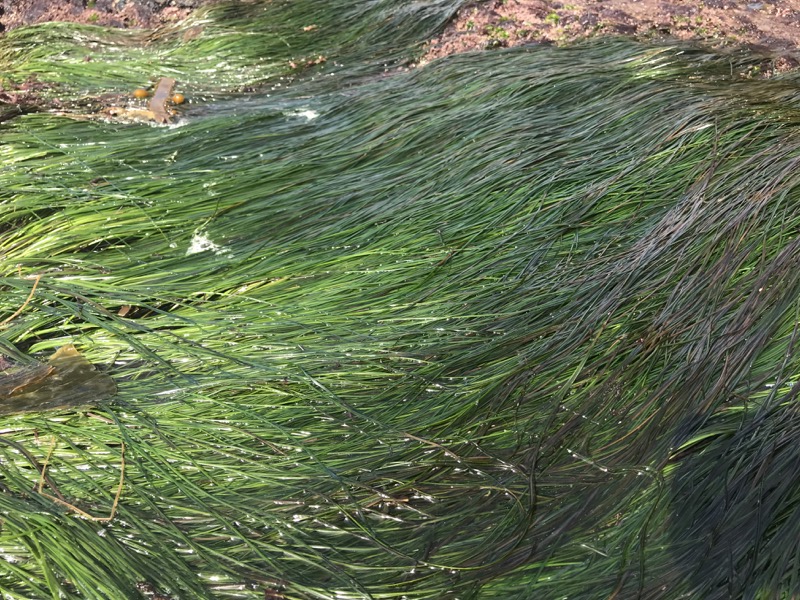 NPS Photo/Nicole Ornelas: Seagrass (Phyllospadix scouleri)
NPS Photo/Nicole Ornelas: Seagrass (Phyllospadix scouleri)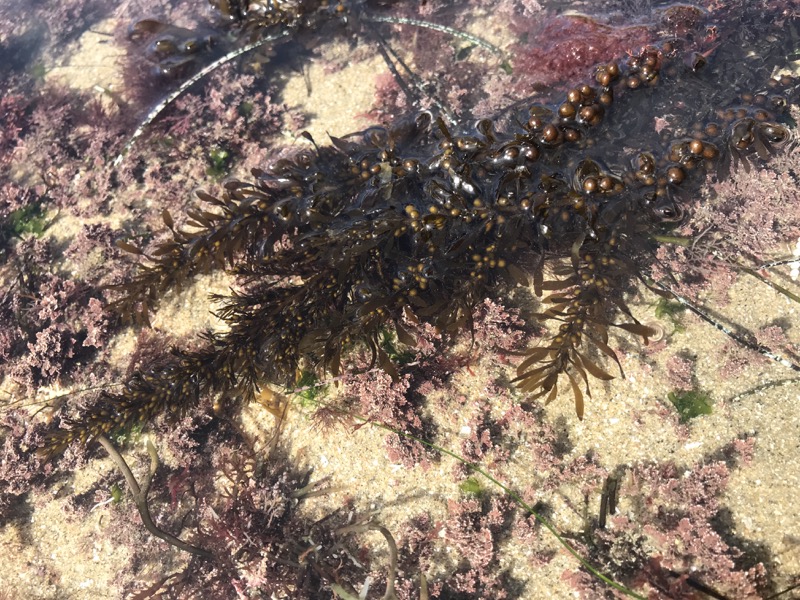 NPS Photo/Nicole Ornelas: Wire Weed (Sargassum muticum)
NPS Photo/Nicole Ornelas: Wire Weed (Sargassum muticum)Dead Man’s Fingers (Codium fragile) and Sea Lettuce (Ulva californica) are some more species commonly found in the tide pools. Sea Lettuce is small but easy to spot because of its bright green color. Ulva is also unique because its leaves are only a couple of cells think. Dead Man’s Fingers is very soft and spongy. One clump is actually made of one large cell with the outer skin acting as one large cell wall.
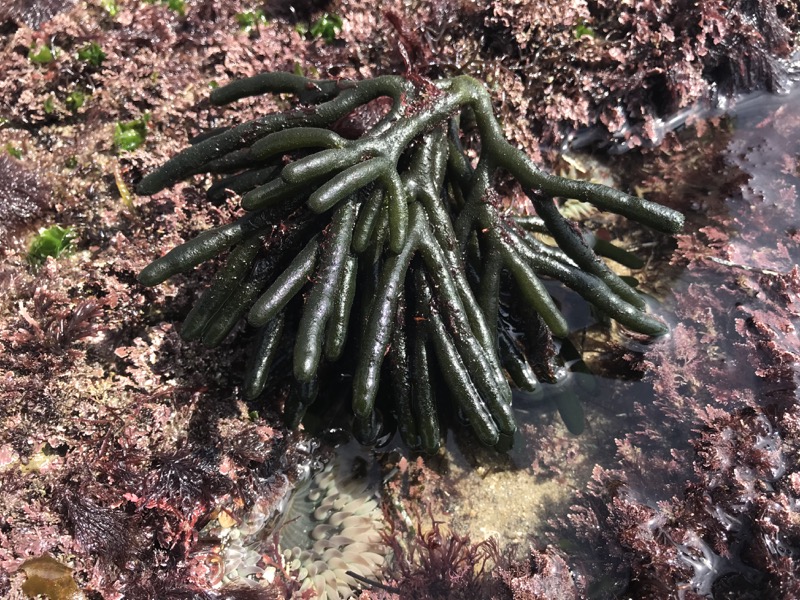 NPS Photo/Nicole Ornelas - Dead Man’s Fingers (Codium fragile)
NPS Photo/Nicole Ornelas - Dead Man’s Fingers (Codium fragile)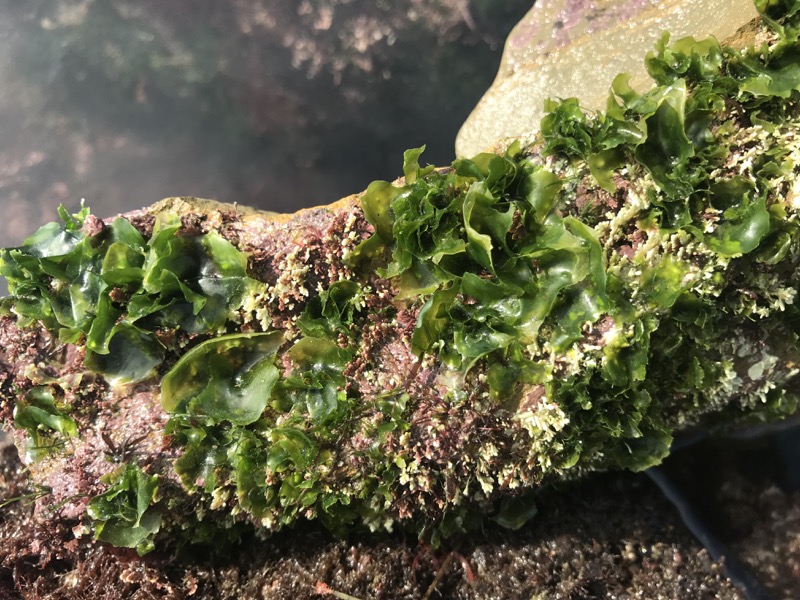 NPS Photo/Nicole Ornelas - Sea Lettuce (Ulva californica)
NPS Photo/Nicole Ornelas - Sea Lettuce (Ulva californica)Coralline algae (Corallina spp.) is an example of red algae in the tide pools. They are small, with a coral-like shell, and one of the most abundant species in the Southern California intertidal.
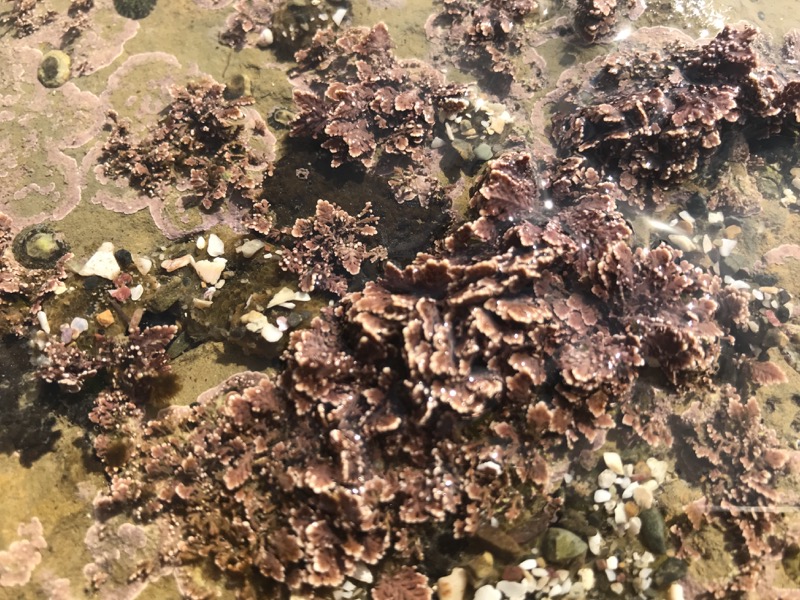 NPS Photo/Nicole Ornelas - Coralline algae (Corallina spp.)
NPS Photo/Nicole Ornelas - Coralline algae (Corallina spp.)So next time you explore the tide pools, make sure to take a deep breath, enjoy the fresh air, and give a big thank you to the countless species of algae that make it all possible.
